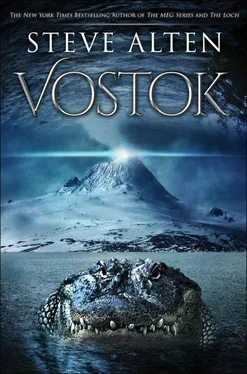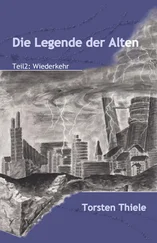The coldest temperature ever measured on Earth was a boneshattering minus 135.8, recorded in East Antarctica… at Russia’s Vostok Station.
After twenty hours in the air, the last plane ride of our first leg of travel touched down at the Presidente Carlos Ibáñez del Campo International Airport in Punta Arenas, Chile, just after seven o’clock in the evening. Exhausted, True and I collected our luggage and stepped outside into the frigid night. A taxi took us to the Blue House, a hostel Ming’s assistant had booked us into for our stay. The moment my head hit the pillow, I passed out. Not even True’s grumbling snores could keep me awake.
* * *
The southernmost city in the world, Punta Arenas is known as the gateway to the Chilean Antarctica. Perched on a hillside overlooking the Straits of Magellan, the Spanish town is a mix of colonial architecture and low-rise buildings with colorful metal roofs. Miles of gridded streets face the sea. Windswept grasslands and sheep ranches sprawl to the east, spectacular fjords and glaciers to the west.
True and I rolled out of our beds around noon, more from hunger than a restful sleep. Following the advice of the hostel owner, we bundled up in our ski jackets and wool hats and walked along the wide avenues past street vendors until we arrived at a stone building that was home to la Luna, a popular tourist spot. True ordered the crab casserole while I had scallops stewed in a garlic sauce, and we drank until we were tipsy.
The night and its drop in temperature arrived early. We shopped, checked out the seaport, and ate dinner in a pub where True attempted to bridge the language gap with our Portuguese waitress. Reminding him we had a noon flight, I returned to our room alone and called Brandy from a land line. Forgetting about the time change, I woke her from a sound sleep and caught hell for being drunk.
Two days down, 182 to go.
* * *
My first official trepidation of the trip began when I walked across the runway beneath a low ceiling of dark clouds and saw the twenty-six-passenger Aerovías DAP seaplane rocking with the weather. A rough take-off and instantly it seemed we were flying over the Magellan Strait and Tierra del Fuego Island past Cape Horn. We dipped and rose with each gust, the pilot momentarily derailing our thoughts of crashing by pointing out a stretch of shoreline that was known as a whale graveyard, the bones of the dead leviathans cast up on the rock-strewn beach by the heavy currents.
The winds grew nastier as we flew over the Drake Passage, one of the more volatile waterways in the world. It was here that the depths dropped in excess of sixteen thousand feet — roughly the distance Ben Hintzmann and I would soon be plunging through ice. True and I watched the turbulent surface. We saw whales breaching and schools of dolphin torpedoing through the deep blue sea as, high overhead, our plane pitched against the elements. Before long, small islands of ice began appearing below, progressing into frozen sculptures of towering white and turquoise and blue, carved by the wind and shaped by the water. These were followed by flat city blocks of snow that quickly occupied the horizon.
After a harrowing five-hour flight we descended to King George Island.
* * *
Located seventy-five miles north of Antarctica, King George Island was the largest of the South Shetlands, an island chain that extended away from the peninsula into the Southern Ocean. Still in its final weeks of winter, King George’s surrounding seas remained fragmented with tabular acres of ice undulating beneath an early evening overcast sky.
Dressed in thermal underwear, jeans, gloves, wool caps, sunglasses, and our expedition jackets, True and I stepped off the plane into the elements and realized our attire was barely serviceable for the “Antarctic tropics,” let alone what awaited us at Vostok. Trudging over a pebble-covered frozen dirt runway in our boots, we hurried past two abandoned Russian amphibious haulers on our way to the airport terminal, the skin over our exposed faces tightening painfully as it froze.
Gasping for breath, I paused. Up on the hill to our left, overlooking the airfield, was a Russian Orthodox Church that appeared like something out of an Alfred Hitchcock movie. True nudged me and pointed to our right.
We were being watched.
Penguins. Ten to fifteen of them stood on the packed snow like a welcoming party. From their markings I surmised they were chinstrap penguins. As we watched, three more suddenly popped out of an unseen ice hole in the water straight onto their feet, standing with their wings extended as they cooled off from their swim.
Unlike the penguins, True and I were not doing well in the freezing cold. Ducking against the wind, we continued across the unpaved airfield to the airport terminal.
Waiting for us inside was a fit-looking man in his twenties. Around his neck hung an I.D. badge that read Caner Gokeri — Davis Station.
“Caner? Zachary Wallace. This is my associate True MacDonald. Are you our liaison?”
“Yes, sir. And it’s pronounced John-Air Go-Carry. It’s a Turkish name. There’s a Hercules C-130 transport on loan from the Uruguayan Air Force waiting to take you to Davis Station, but before you board I’ve been instructed to outfit you for the weather.”
“Glad you said that. It’s pretty damn cold outside.”
Caner smiled. “This is balmy compared to where you’re going. Summer runs from mid-November through mid-February on the ice, and even then you’ll be lucky to hit minus twenty. If you gentlemen will follow me, I’ve borrowed one of the lounges to get you suited up.”
Caner told us he was a graduate student in the United States studying marine biology and was a fan of my work. He had been at Davis Station for a year, earning his keep as a cook while completing research in the environmental sciences. “Most of the people working at ice stations have college degrees, yet few of us ever end up doing scientific work related to our field of study. More important than publishing a research paper is just being here . There’s simply no where else like it.”
We followed him through the near-deserted terminal and down a corridor, stopping at a closed door labeled AUX-3. Keying the lock, he led us inside.
The smell of breakfast hit me first, the aroma coming from heated trays of food occupying a foldout table. Laid out on several other tables were neat piles of clothing and an assortment of gloves and boots. “This is ECW gear — Extremely Cold Weather clothing, designed especially to handle prolonged exposure to the elements. In addition, I personally customized a few items based on my own experiences on the ice. Vostok-cold requires extra care. For instance, I sewed fleece patches onto the quad section of your thermal underwear.”
“What in God’s name for, lad?” True asked, his mouth stuffed with scrambled eggs.
“There’s a condition we call ‘Antarctic thigh,’ which is severe frostbite of the quads. It’s caused by walking into the wind. And the wind gusts will also take your gloves and mittens, which is why I’ve sewn on elastic loops that connect them to your ski jacket. I also added kangaroo pouches in your thermal layers to store batteries and snacks. The key to staying warm out on the ice is layering your clothing loose enough to create insulating pockets of air. Too tight and you get frostbite. Go ahead and eat. Then we’ll repack the belongings you’ll be taking with you into Antarctica-friendly duffle bags.”
An hour later we had stuffed ourselves with food, used the bathroom, and had completely reorganized our gear, eliminating most of the clothing we had brought from Scotland. Caner had us stow these items in our suitcases, which would be locked away at the airport and reclaimed in six months when we passed through on our return trip home. In its place were an assortment of lighter weight thermal undergarments and waterproof leggings, baggy pants shells, fleece trousers and sweaters, and two bright-orange jumpsuits designed to deflect the wind. We packed everything in duffle bags except for what we’d be wearing on the flight over. Stripping down to our boxer shorts, we redressed in layers, zipping ourselves up in the orange jumpsuits. On our feet we put two pairs of socks and double-lined rubber-insulated boots, and on our hands skin-tight gloves and elbow-high mittens. A wool scarf, wind-shielding snow hat, and tinted goggles completed the outfit, sealing every inch of exposed flesh on our bodies.
Читать дальше












